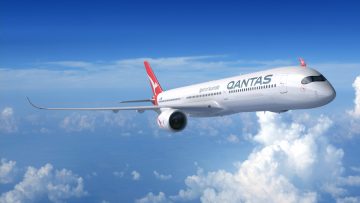
Airfares in Asia-Pacific and the Middle East have surged as nations emerged from pandemic-related restrictions, according to the Airports Council International (ACI) Asia-Pacific’s latest Airport Industry Outlook.
The fourth edition of the Airport Industry Outlook, developed in partnership with Mott MacDonald, provides an analysis of airfare trends during the pandemic and in the recovery phase, and summarises the 2022 year-end performance of the airport industry in terms of traffic recovery and economics.
Airfares in Asia-Pacific and the Middle East were above the global average – up 53 per cent (nominal terms) or 35 per cent (real terms) in 2022 vs 2019, although fares were trending down towards the end of the year as traffic recovered, ACI says.
Commenting on the surge in airfares, Stefano Baronci, director general of ACI Asia-Pacific said:
“Despite a consolidated recovery of domestic traffic as compared to 2019 levels, and a progressive improvement of international traffic, with peak performances in Middle East and South Asia, the financial health of airport operators continued to be in distress, with 10 consecutive quarters in the red both in terms of EBITDA and net profit margin.
Despite substantial efforts by airports to freeze or lower airport charges in 2022, the average 53% increase in airfares throughout 2022, compared to 2019, reveals a fundamental imbalance in the financial stability of the industry as well as pose a threat to the sector’s full recovery in 2023. Fuel prices, wage inflation, insufficient seat capacity relative to demand and a lack of airline competition on specific routes, are the major determinants in the increase in airfares.”
The increase in airfares were significantly above the global average with airline yields (revenue per RPK) that were 29 per cent higher in 2022 than in 2019 in nominal terms.
This is in sharp contrast to the financial health of airports, which are still losing money, with regional EBITDA and net profit margins being negative for the tenth consecutive quarter since 2020.
Airfares have increased across sector distances and the different markets served in the APAC-ME region.
Airfares in 2022 were much more volatile than in 2019 (pre-pandemic).
The largest increases in percentage and absolute terms were reported in areas which applied stringent and long-lasting Covid-19-related travel restrictions, including in ‘Emerging East Asia’ (mainly China) where yields increased 90 per cent in 2022 over 2019 levels, followed by ‘Developed East Asia’ with yields up 67 per cent.
All other regions, including Oceania (+49 per cent), South East Asia (+35 per cent), Middle East (+30 per cent) South Asia (+19 per cent) reported fare increases compared with 2019, despite generally lower than in 2021 as travel restrictions were progressively lifted.
To understand the market dynamics of air fares in more detail, the world’s top 15 busiest international routes in 2019 were analyzed in detail.
All but one of these routes are in the Asia-Pacific and Middle East region – the exception being London Heathrow to New York JFK.
Across these busiest routes in 2022, the number of passengers was down 66 per cent and the average airfare was up 77 per cent.
Airfares increases were mainly driven by variations in airline operating costs (e.g., fuel price, wage inflation), reduced seat capacity relative to demand; less airline competition on some routes; efforts to recover losses incurred during the pandemic and increased debt and interest rates, ACI notes.
The largest airfare increase was reported on routes with strict travel restrictions and scarce frequencies and airlines competition, such as the ones connecting Hong Kong with Manila and Shanghai.
Conversely, LHR-JFK passengers had already recovered to 89 per cent of 2019 levels in July 2019 and the airfare increase was a more modest increase of 21 per cent.
Headquartered in Hong Kong, ACI Asia-Pacific serves as the voice of 131 airport members, operating 622 airports across 47 countries/territories in Asia-Pacific and Middle East.












